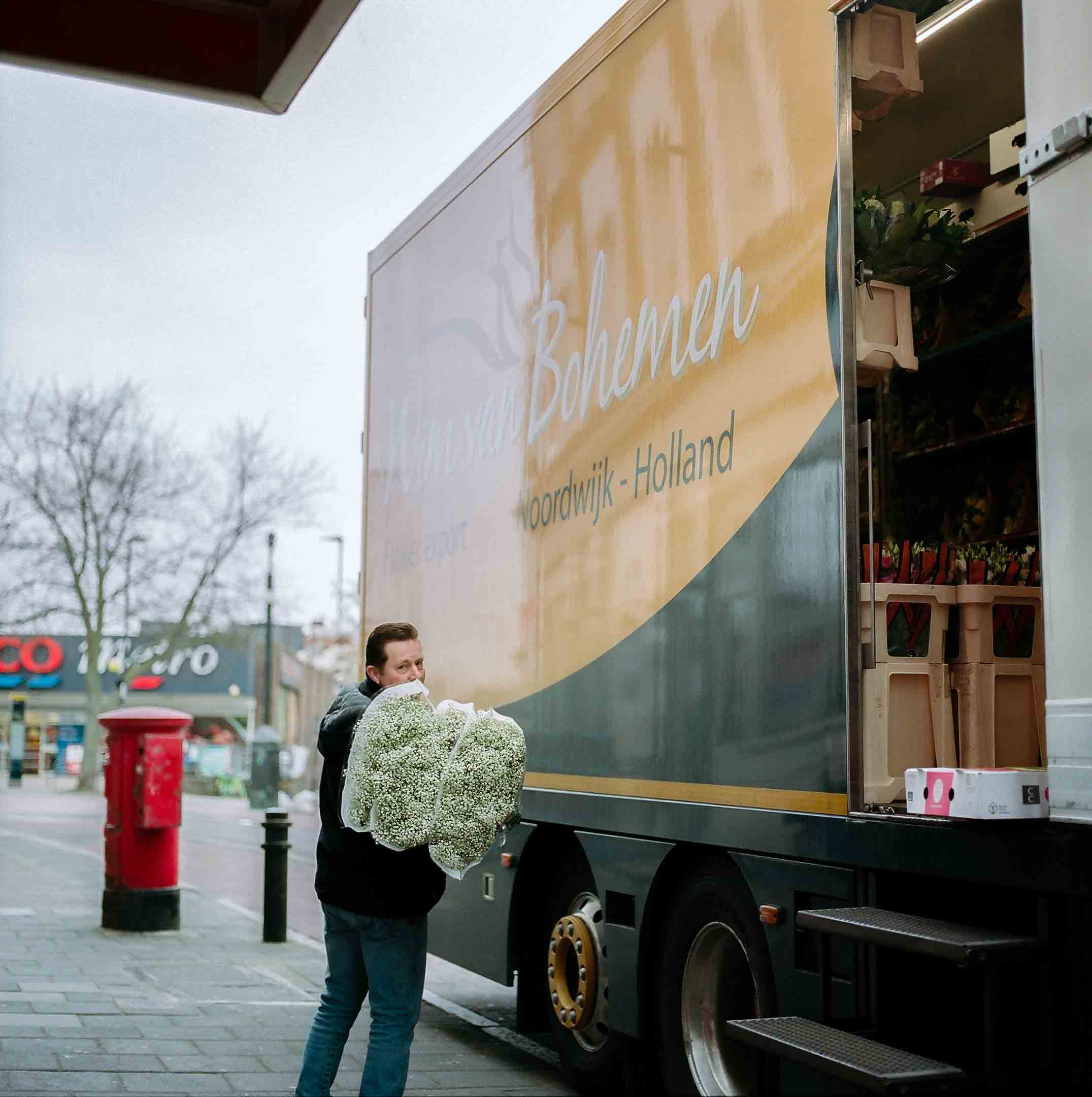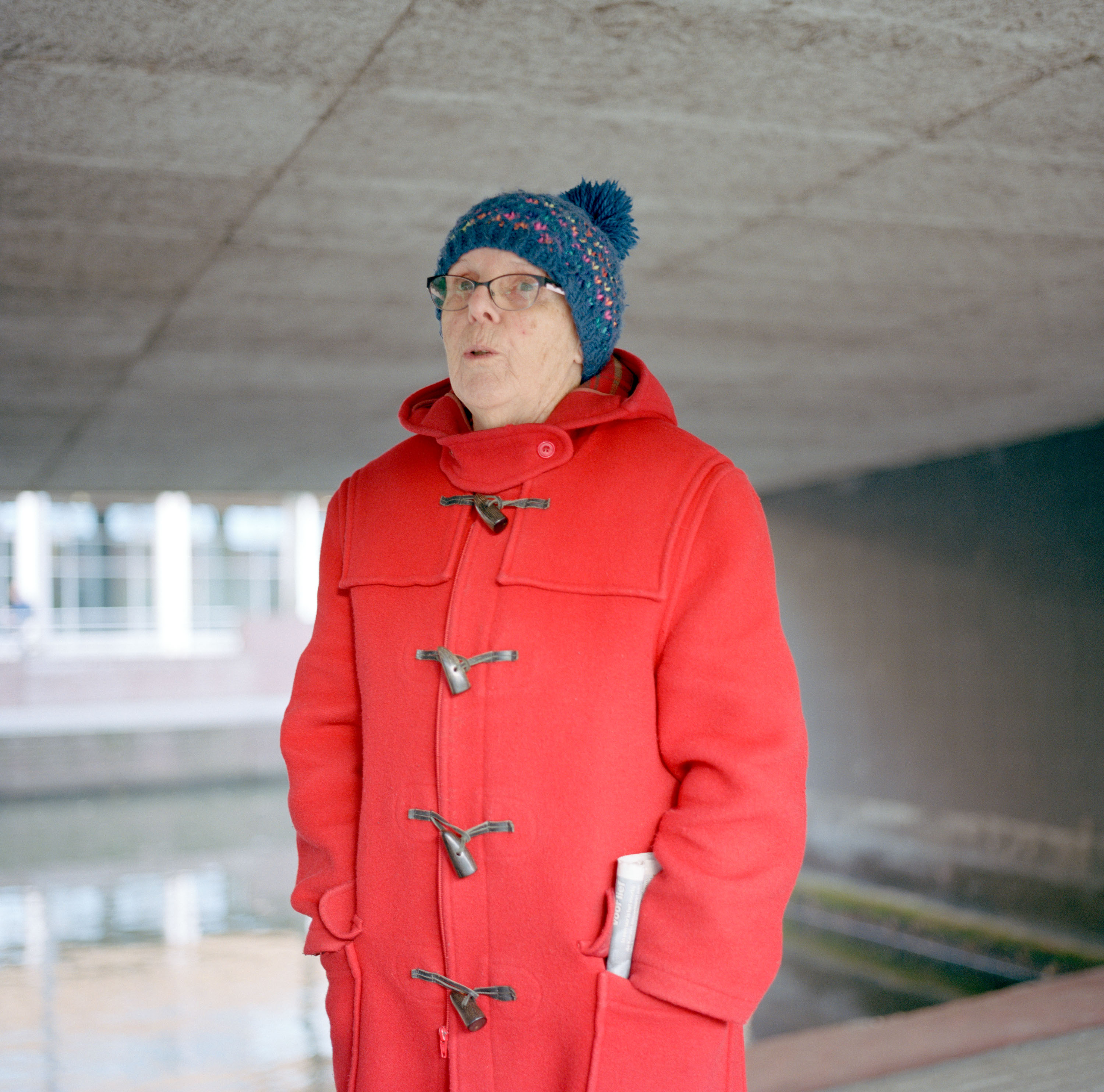Inside
The project unfolded during the first lockdown in The Netherlands. During that time school closures discouraged contact with friends for young people: the pandemic hit the youth as much as any other generation. Yet we collectively fail to recognise the non-physical toll it takes on the youth that is growing up in unforeseeable times.
In My Room (2020) are portraits of various Dutch girls and boys in their mid-teens. The teenagers allow us into their private rooms and offer us a brief but powerful glimpse into the space they have been confined to during this essential phase of their social and personal development.
The young people sit there and look at us. They seem almost cautious, reserved, somewhat skeptical. It is only a part of the room, what we see. But it is a view into their own world. Something intimate. The bedroom is the stage.
Utopia which is the main subject, does not actually lie in the future, but in what is in abeyance within ourselves. A thought that rather corresponds to the direct view of the portraits and to the way the young people look back on us. They are, of course, the futures contemporary witnesses. And corona is like a foreshadowing of future catastrophes.
In a sense, the things in the room become witnesses to the inhabitants, they provide information about them. And show what someone dreams about. These things strangely take on the physiognomy of their owners. They tell stories.
This series was displayed as part of the photo festival Naarden in 2020.















The Butchers
Meat is something that plays a significant role in our culture, yet we never experience its production. In the last decades, the meat industry has transitioned from manual slaughter by the farmer to highly specialised production factories. As demand for meat increased, the production turned clinical, efficient and faster than ever before.
In our consumer culture, we put the meat industries employees in a situation in which they have to work in mass production while at the same time, we are criticising them for the existence of their job. Butchers are scapegoats of society, blamed for all the fear and aversion which is, at least subconsciously connected to the killing of a living being.
Portraying butchers with their favourite pieces of meat, gave me an insight into the relationship employees have with the dead animals. They carry the meat, the product of their craftsmanship. Butchering is what they do for a living; it feeds them.
See KABK graduation catalogue
In our consumer culture, we put the meat industries employees in a situation in which they have to work in mass production while at the same time, we are criticising them for the existence of their job. Butchers are scapegoats of society, blamed for all the fear and aversion which is, at least subconsciously connected to the killing of a living being.
Portraying butchers with their favourite pieces of meat, gave me an insight into the relationship employees have with the dead animals. They carry the meat, the product of their craftsmanship. Butchering is what they do for a living; it feeds them.
See KABK graduation catalogue






Brexit Flowers
Dutch flower growers have been selling their flowers in England for over one hundred years. Each year, eight hundred fifty million euros worth of flowers are sold to the British.
The European borders are easily accessible for the Dutch flowers thanks to European trade. How will Brexit effect this? Will the flowers soon wither at the boarders? What has the future in store for the people involved? The fragile flowers are a metaphor for the uncertain Brexit times.







Twins
Diny and Willemien are born as identical twins. They not only share the same genes but also many childhood memories. The twins could always be honest with each other. Until the day that Diny mentioned to her twin sister that she was forgetting a lot and thought she showed symptoms of dementia. The honesty made Willemien upset and not wanted to speak to Diny because she felt so insulted. After more than half a year not talking to each other, Willemien called Diny again. Willemien forgot that she was mad and that they were in a fight.
In 2016, Willemien was diagnosed with dementia. Since then, the twin sisters have been closely monitored by various scientific studies, as their genetical sameness makes it easy to study the process of the disease. With identical twins, there is a tendency to mirror each other's behaviour. This is not possible if your reflection is not the same as before.
Looking at old photographs of the twins with the same outfits, it's hard to keep them apart. But this illness makes you question if they even were twin sisters. Throughout my time with them, I wanted to see the effect of progressing dementia on the twin's relationship. As well as Willemien's narrowing self-awareness. She sometimes confused herself with her twin sister. While Willemien's identity was slowly fading, I got to know her persona through her twin sisters eyes. Unfortunately, Diny lost her identical twin sister by Alzheimer's disease.















Molenaaren
Dutch, “millers”. A miller is a person who operates a mill, a machine to grind a grain (for example corn or wheat) to make flour. Milling is among the oldest of human occupations.
One day I drove past a windmill and I wondered if people still live there and if they are still in use. I wanted to find this out and took a closer look at the life of a miller today.
The miller profession barely exists anymore, nowadays the millers are voluntary. Besides being a miller people have a fixed job. However the miller life still exist in The Netherlands, people live in there; even big families. Mills became monuments and are being replaced when they are surrounded by buildings and don’t have a function anymore through the lack of wind for windmills.
This is an ongoing project since I meet a miller every once in a while.


